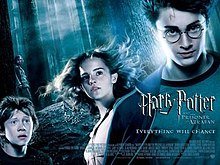Historical Context and Premiere
On May 31st, 2004, UK cinemas witnessed the much-anticipated release of “Harry Potter and the Prisoner of Azkaban.” This third installment in the beloved Harry Potter film series was directed by Alfonso Cuarón, diverging significantly from the tone set by Chris Columbus in the first two films. The atmosphere in the UK at the time was charged with excitement and curiosity, with fans eager to see how Cuarón would bring his unique vision to the magical world created by J.K. Rowling.
Alfonso Cuarón’s directorial approach introduced a darker, more mature narrative that aligned with the characters’ growth. Unlike Columbus’s more whimsical and light-hearted style, Cuarón opted for a visual style that incorporated muted colors and dynamic camera work, enhancing the film’s atmospheric tension. The narrative pacing also saw a shift, focusing more on character development and the intricate plot rather than solely on magical spectacle. This added a layer of thematic depth, exploring complex issues like fear, identity, and trust.
The anticipation surrounding the premiere of “Harry Potter and the Prisoner of Azkaban” was palpable. Contemporary reviews from leading publications like The Guardian and The Times lauded Cuarón’s fresh take on the franchise. Critics praised the film’s darker tone and sophisticated storytelling. For instance, Peter Bradshaw from The Guardian noted, “Cuarón brings a distinctly personal touch to the Harry Potter series, enriching the narrative with a maturity that resonates with both young and adult audiences.”
Box office statistics underscored the film’s success, with an opening weekend gross of over £23 million in the UK alone. This remarkable performance was a testament to the film’s wide-reaching appeal and the high expectations that had been met. Fans and critics alike appreciated the nuanced performances of the cast, particularly the evolving dynamics among the central trio—Harry, Hermione, and Ron.
External sources from 2004, including interviews with the cast and crew, further emphasize the premiere’s significance. In an interview with BBC News, Daniel Radcliffe expressed his excitement about working under Cuarón’s direction, stating, “Alfonso brought a new energy to the set, pushing us to explore our characters in deeper, more meaningful ways.”
In conclusion, the release of “Harry Potter and the Prisoner of Azkaban” on May 31st, 2004, marked a pivotal moment in the cinematic journey of the Harry Potter series. Alfonso Cuarón’s directorial vision not only set a new standard for subsequent films but also solidified this installment’s place as a cherished classic within the franchise.
Impact on the Harry Potter Franchise and Global Cinema
The release of “Harry Potter and the Prisoner of Azkaban” on 31st May 2004 marked a significant turning point for the Harry Potter franchise and its influence on global cinema. Directed by Alfonso Cuarón, the third installment in the series was acclaimed for its sophisticated visual style, groundbreaking special effects, and the compelling performances of its lead actors—Daniel Radcliffe, Emma Watson, and Rupert Grint. This film effectively transitioned the series from a children’s fantasy to a more mature, universally acclaimed cinematic experience.
One of the standout elements of “Harry Potter and the Prisoner of Azkaban” was its innovative special effects, particularly the depiction of the Dementors. These dark, menacing creatures were brought to life with a chilling realism that captivated audiences and critics alike. The atmospheric cinematography, characterized by its darker tones and more dynamic camera movements, further contributed to the film’s mature aesthetic. Cuarón’s vision was instrumental in redefining the visual language of the series, setting a new standard for subsequent films.
The performances of Radcliffe, Watson, and Grint were also widely praised. As their characters faced more complex emotional challenges, the actors delivered nuanced portrayals that resonated with audiences. This maturity in performance was crucial in elevating the series’ narrative depth, making it appealing to a broader demographic. Critical reviews, such as those from Rotten Tomatoes, highlighted these aspects, with the film holding a high approval rating.
The success of “Harry Potter and the Prisoner of Azkaban” is reflected in its box office performance, grossing over $796 million worldwide, and its recognition at various award ceremonies. It received nominations for Academy Awards in categories like Best Visual Effects and Best Original Score, showcasing its technical and artistic achievements. The film’s impact extended beyond the franchise, influencing the tone and style of subsequent fantasy films and solidifying its legacy in modern cinema.
For a deeper understanding of the film’s cultural impact, interviews with Alfonso Cuarón and retrospectives on the Harry Potter series provide valuable insights. These resources, such as The Guardian’s interview with Cuarón, offer a comprehensive look at how “Harry Potter and the Prisoner of Azkaban” reshaped the franchise and left an indelible mark on global cinema.

